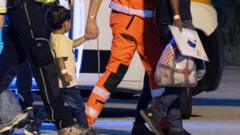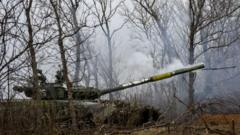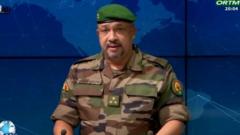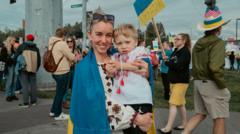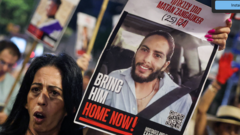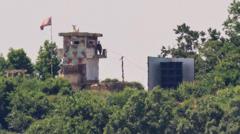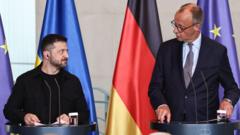As Russia projects a revamped image of Mariupol, local residents reveal a different truth—ongoing devastation, severe shortages, and oppressive propaganda characterize their day-to-day existence in the besieged city.
"The Hidden Reality of Mariupol: A Struggle Against Occupation"
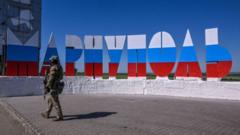
"The Hidden Reality of Mariupol: A Struggle Against Occupation"
Residents of Mariupol expose a stark contrast between Russian narratives and the grim reality of life in the occupied city.
Ukrainian residents of Mariupol are pushing back against the rosy portrayal of their city portrayed by Russian media, asserting that the reality is far bleaker. “What they’re sharing on Russian TV are just fairy tales for fools. Much of Mariupol remains in ruins,” states John, a local who chose to conceal his identity due to fears of Russian retaliation. He notes that while the facades of some main street buildings are being repaired for cameras, the surrounding areas remain filled with rubble and despair, with many living in dangerously compromised structures.
Almost three years post-occupation, Mariupol's horror remains present, following a catastrophic siege that contributed to the deaths of thousands, as emphasized by the UN's report that nearly 90% of residential buildings suffered damage or obliteration. Despite recent videos propagated by pro-Russian influencers, many locals contest these claims, sharing their lived realities of scarcity.
66-year-old Olha Onyshko, who escaped Mariupol last year, asserts, “I wouldn’t say they’ve repaired much. Only the central square was touched up; everywhere else, the devastation remains.” Electricity is frequently unavailable, essential medicines are scarce, and water is both limited and unsafe—despite claims of recovery. A resident describes the water as “so yellow it looks like Coca-Cola” after boiling.
Caught amidst the disaster are the region's children, indoctrinated by propaganda in schools that falsely suggest various Ukrainian territories, including major cities, are parts of Russia. Andrii Kozhushyna, a former university student in Mariupol, highlights the alarming bias in textbooks and specialized “Conversations about Important Things” lessons aimed at inculcating Russian narratives about “liberating” Ukrainian territories.
Amidst the harsh conditions, acts of defiance persist, with underground groups actively resisting the occupation. Under the cover of darkness, guerrillas paint Ukrainian colors and distribute leaflets proclaiming, "Mariupol is Ukraine," while gathering crucial intelligence for Ukraine's military efforts. James, one activist, documents troop movements and weapon transfers, emphasizing the danger of their work as they remain vigilant against potential betrayals.
For residents still enduring day-to-day life in Mariupol, a constant sense of peril looms. “Every message is deleted for fear of surveillance. Your neighbor could become your worst enemy,” shares James. Citing arbitrary detentions, he reflects on how trust has eroded amidst the oppression. With peace talks on the horizon, residents unequivocally reject the notion of sacrificing their homeland for a fleeting agreement, insisting instead on liberation from occupation.
The situation in Mariupol remains perilous as residents confront ongoing hardships, hoping their narrative will surpass state propaganda and shed light on their struggle to survive.

